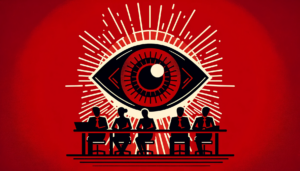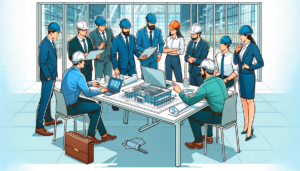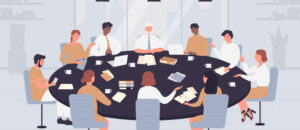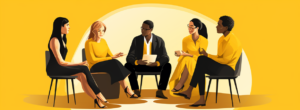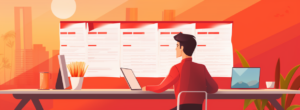Creative strategies for the future of work
- 5 Min Read
3 key shifts and associated creative strategies to consider when exploring what the future of work will look like in light of the biggest shake-up in work and workplace for a generation.
- Author: Jeremy Myerson
- Date published: Oct 28, 2022
- Categories
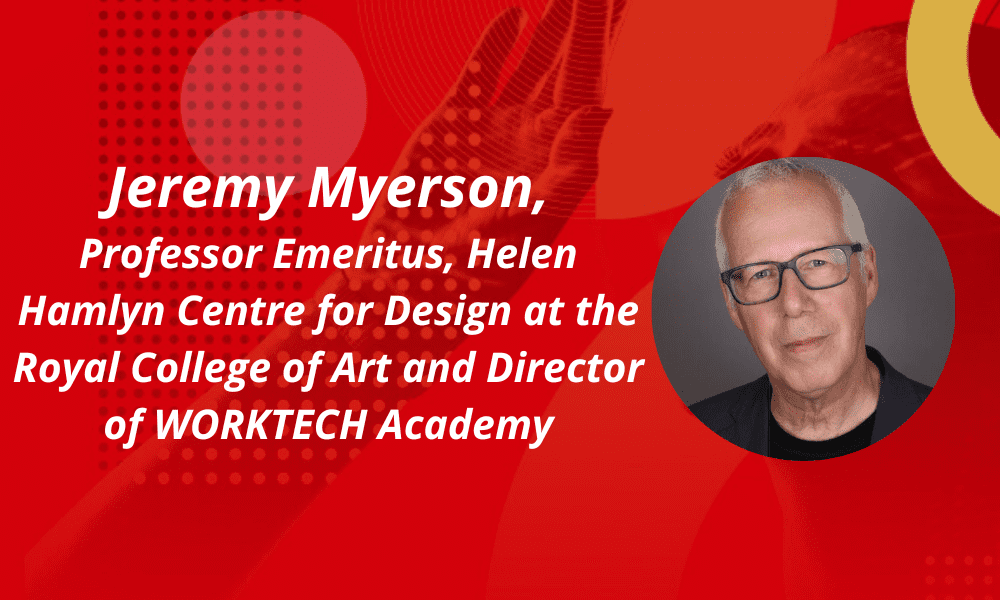
If you want to get an insight into the future of work, then you need only take a look at what’s been happening in 2022.
This year we have seen millions of workers around the world mandated back to the office by their employers after the global pandemic, but resist doing so in huge numbers. In the UK, senior government ministers have left unsubtle calling cards on the desks of work-and-home civil servants, demanding they return to Whitehall as soon as possible.
Companies have started investing heavily in all types of smart technology, including VR headsets, video suites and even the metaverse, as they try to find ways to enable a remote workforce to collaborate more effectively in a ‘hybrid’ model.
Employers have started paying unprecedented attention to the mental wellbeing of their workers, not just their physical safety. And designers have started remodelling office space with a focus on hospitality, socialising and ‘customer’ experience.
It all adds up to the biggest shake-up in work and workplace for a generation. Unsurprisingly, the enormity and pace of change is proving a challenge whether you are a corporate leader or a junior employee, a workspace architect or a facilities manager.
Amid such a rapidly transforming landscape, it is important to look at the future of work from a creative angle – to find a fresh perspective and develop solutions that were never part of the traditional repertoire of office planning and design.
In my new book with co-author Philip Ross, Unworking: The Reinvention of the Modern Office, we discuss the need to unlearn certain fixed ideas about work and workplace. We define the term ‘unworking’ as ‘unravelling how we work, unbundling the assumptions that are baked into the modern office, and unlearning the habits, management styles and workplace cultures that have traditionally defined our behaviour at work’.
The purpose of ‘unworking’ is to reimagine what the future workplace could be like. It is a task that requires the application of creative imagination and strategic design thinking principles. Here are three key shifts and associated creative strategies to consider.

From process to experience
First, there should be a people-first focus on providing a better workplace experience for employees who now have more choice of where to work in the hybrid era. Organisations should stop obsessing about what people do (process) and give more consideration to how they feel about it (experience). Already, we are seeing new job titles emerge inside organisations such as ‘Chief Experience Officer’, ‘Chief Heart Officer’ and ‘Head of Dynamic Work’, reflecting a greater focus on experience.
Transposition of design techniques more familiar in hospitality, retail and entertainment to the workplace – a method known as cross-pollination – will help to create more people-centric environments. So will experience mapping and user journey mapping techniques, which again are more commonly seen in retail.
From efficient to inclusive
One size does not fit all. It never did, but even less so now in the new era of work where effectiveness will be prized above efficiency. Company leaders have therefore got to wean themselves off an addiction to blunt economies of scale, universal planning, ‘vanilla solutions’, high-density open plan and so on, to embrace a more heterogeneous approach.
Future workforces will be multi-generational and more diverse in terms of ability, race, ethnicity and sexual orientation. Workplaces will need to be inclusive so that everyone feels welcomed and valued irrespective of their differences. There is little point in recruiting more diverse talent with a wider perspective and capacity for innovation if the workplace is not itself inclusive of their needs.
The empathic and human-centric basis of design thinking techniques are relevant here to truly understand individual needs; ethnographic research among employees should be a key component of any workplace strategy or transformation project.
From dumb to data-led
Company bosses have tended in the past to view office buildings as dumb containers for work, a cost rather than investment. That is because they yielded little actionable data that could be useful to the business. The office of the future will be much smarter than before. It will provide constant data flows that can inform evidence-based decision-making on everything from HR policies and office redesign to corporate strategy.
Data analytics, spatial intelligence and sociometric technologies will transform how we measure performance and engagement in the workplace. Sensors and cameras will capture every move and give unprecedented insights into company behaviour. Dashboards showing real-time data on occupancy level and environmental conditions will allow managers to ‘fine tune’ their resources.
It is therefore important to assess what data will be captured and how it will be analysed on any future work project. Marrying up quantitative data with qualitative insights about user behaviour will be important to an evidence-based approach to design decision-making. Understanding energy use and carbon capture will support greener buildings and more sustainable work patterns.
In summary, the future of work is likely to be more experience-driven, more inclusive, more data-led and more sustainable than in the past.
Reaching this new horizon will require organisations and individuals to reframe their thinking – ‘unworking’ all they’ve known in the past and bringing new creative strategies to the table.
—
Jeremy Myerson is Professor Emeritus in the Helen Hamlyn Centre for Design at the Royal College of Art and Director of WORKTECH Academy.
He will be leading a new four-day live online RCA Executive Education Masterclass entitled ‘Creative Strategies for the Future of Work’ on 3,4,7 and 8 November 2022. This has been devised to demonstrate how to apply creative and strategic design thinking principles to address future-of-work challenges with new tools and frameworks.
Unworking: The Reinvention of the Modern Office by Jeremy Myerson and Philip Ross is published by Reaktion Books (2022).


